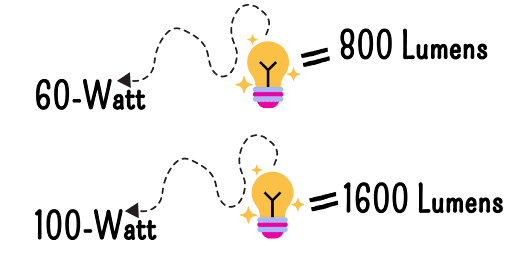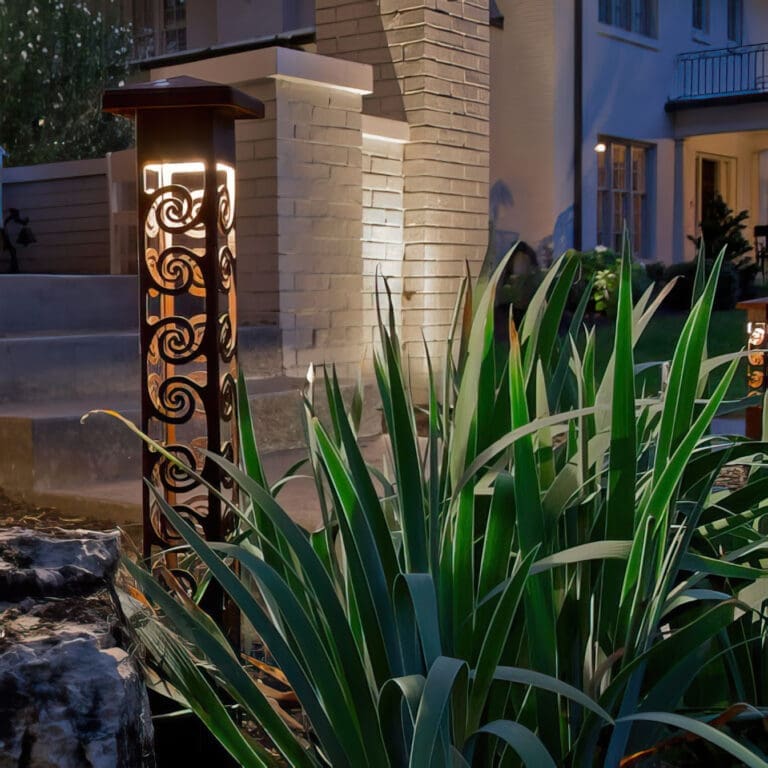When designing an outdoor space, lighting is one of the most crucial elements to consider. Not only does it enhance the aesthetic appeal of your home, garden, patio, driveway, or any other outdoor area, but it also plays a vital role in safety and functionality. Let’s delve into understanding lumens, how they impact outdoor lighting, and explore practical tips to ensure your outdoor spaces are beautifully and efficiently lit.
Understanding Lumens
One of the key aspects of outdoor lighting design is understanding lumens, the unit of measurement that indicates the quantity of light being dispersed in all directions from a source. Unlike watts, which measure energy consumption, lumens measure the amount of light emitted. The higher the lumen count, the brighter the light. For instance, a standard 60-watt A-19 incandescent bulb produces about 800 lumens, while a 100-watt A-19 bulb produces around 1,600 lumens. Choosing the right lumen output can transform your outdoor area into a welcoming and ambient environment, perfect for evening gatherings or a quiet night under the stars.

When planning outdoor lighting, it’s crucial to focus on lumens rather than watts, especially with the advent of energy-efficient LED lighting. LEDs consume less power while providing the same or even higher lumen output compared to traditional incandescent or fluorescent lights.
Determining Your Lighting Needs
To determine the appropriate lumens for your outdoor space, first consider that the number of lumens needed is specific to your unique space and can vary depending on your personal preferences and needs. You will also want to think about the purpose of each area you plan to light.
- Purpose: Are you aiming to enhance safety, security, or aesthetics? Different purposes require varying lighting intensities and placements.
- Area Size: Larger areas will naturally require more lumens to ensure adequate illumination.
- Lighting Zones: Divide your outdoor space into zones (e.g., pathways, seating areas, garden beds) and determine the specific lighting needs for each zone.
For pathways and walkways, a moderate level of brightness is sufficient to ensure safety without overwhelming the senses with bright, glaring lights, such as floodlights. Typically, 100 to 200 lumens per fixture is ideal for these areas. For larger spaces, such as patios or decks where you might entertain guests, you may want to use a higher lumen output to create a well-lit, inviting atmosphere. To keep things more subtle, start with around 200 lumens; for a brighter, well-lit environment, you can use between 300 and 600 lumens for these focal points. If you have a garden or landscaping features you’d like to highlight, accent lighting with 100 to 300 lumens can add a touch of elegance and draw attention to specific plants or structures.
Keep in mind, you can maintain a subtle lighting effect with lower lumens and still achieve safety and security without over-lighting your home and outdoor areas. This is why outdoor lighting design and creating lighting zones are important. By following these steps, you can create a beautiful lightscape that balances safety, aesthetics, and security for your home.
Choosing the Right Color Temperature
Another important aspect of outdoor lighting is the color temperature of the bulbs. Warm white lights (2700K to 3000K) create a cozy, inviting atmosphere that is ambient and relaxing. Cool white lights, on the other hand (3500K to 4100K), provide a brighter, more energizing feel. This color temperature can be overwhelming to the senses and isn’t very relaxing. Be sure to carefully select the right lumens and color temperature for your outdoor space, as these two factors can dramatically change the vibe from relaxing and ambient to bright and energizing.

Types of Outdoor Lighting
Lastly, you will want to consider the type of lighting fixture and its placement. For pathways, using beautiful brass high-spread pathway light fixtures will provide the perfect amount of aerial coverage, enhancing both safety and ambiance in your landscaping. When uplighting a home, use spotlight fixtures to create a beautiful beam spread across the facade. When installing your outdoor lighting, ensure that the fixtures are weather-resistant and suitable for exterior use. Proper placement and aiming of the lights are crucial to avoid glare and to ensure the light is directed where it is needed most.
Conclusion
Understanding and effectively using lumens is essential for creating beautifully lit outdoor spaces. By focusing on lumens rather than watts, determining your lighting needs, and choosing the right fixtures, you can transform your garden, patio, or driveway into a safe, functional, and aesthetically pleasing area. Remember to plan ahead, layer your lighting, and consider factors such as color temperature and energy efficiency. With these tips in mind, you’ll be well on your way to illuminating your outdoor spaces in a way that enhances both their beauty and functionality.
This blog post was authored by Gleam Electrical and Lighting Design, a trusted source for professional lighting advice and solutions. You can explore their website here: Gleam Lighting.


